2007 Physics Olympics
Pirates Of The Bluegrass
Overview
Pirates of the Bluegrass is the theme for this year’s Western Kentucky Physics Olympics, a half-day competition consisting of a pentathlon of challenging problem-solving activities that reward teamwork, creativity, and communication.
The WKU Department of Physics and Astronomy invites each high school to send one or more teams of four to compete in the 2007 Western Kentucky Physics Olympics. This year’s event will be held Saturday, February 24 from 8:30 a.m. until about 2:00 p.m. in the Thompson Center, Central Wing on WKU’s Bowling Green campus.
The competition will commence with two activities that involve competitors arriving at the event ready to compete with devices they have designed, constructed, and tested. The competition entitled Sail Ho! – Spyglass to the Horizon requires each team to design, construct, and use a telescope to resolve a distant image. For Bungee From the Crows Nest each team will acquire and test an elastic cord to be able to drop a particular mass from a given height so that it drops as close as possible to the deck of the ship without actually impacting. This year’s Calculation / Communication Challenge will be a test of pulleys and levers to lift a treasure chest out of its hole, requiring two members of the team to make a series of measurements and the other two members to follow the devised plan and actually lift the chest. The final two events - the "On-the-Spot Activity", a mostly hands-on, impromptu challenge, and the "Order-of-Magnitude Quiz", a brain teaser which asks contestants to quickly estimate answers for extreme situations - will remain cloaked in secrecy until those events actually begin.
Event 1: Sail Ho! – Spyglass to the Horizon
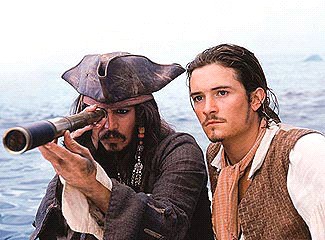 “Sail Ho!” called the lookout from the crow’s nest. Immediately the crew of buccaneer’s
sprang into action, prepared to either plunder a merchant ship or to run from a military
frigate.
“Sail Ho!” called the lookout from the crow’s nest. Immediately the crew of buccaneer’s
sprang into action, prepared to either plunder a merchant ship or to run from a military
frigate.
A pirate’s livelihood depended upon being able to see another ship before its crew spied the pirates. The highest quality spyglass was therefore one of the most important tools for a pirate to own. In this event you will use lenses supplied by the event organizers to construct a refracting spyglass telescope capable of resolving fine detail at the maximum distance.
Upon registration, each team will receive a set of optical lenses and a sheet of paper with word-processed text set in 24-point, bold-face Courier font. After researching the principles of refracting telescope systems, the team will construct its own telescope using these lenses.
The team should initially test its telescope by observing the text on the paper supplied by the organizers when placed at 20 meters. All members of the team must be able to use their telescope to read the supplied text at a distance of 20 meters. Next, the team should test how distant can the paper be placed and still be successfully read.
The day before the event, a representative from the team must e-mail the event organizers with the predicted distance at which each team member can read a new message set in 24-point, bold-face Courier font.
On the day of the competition the team will demonstrate (1) a randomly selected member of the team can observe with their telescope and accurately read at a distance of 20 meters a new text message set in 24 point, bold-face Courier font; and (2) all members of the team can verify the accuracy of their prediction by correctly reading another message set in 24-point, bold-face Courier text at the predicted distance e-mailed to the organizers on the previous day.
Each of the team members will have 20 seconds to line up the telescope of the target and 30 seconds to make individual readings of a new text. For each test the new text must be read completely correctly or the entire test is deemed to be a failure for that team member.
For each member that successfully reads the new text at the predicted distance, the team receives one-tenth of a point for each decimeter of distance to the target.
If a team member fails to read at the predicted distance, the organizers will move the target 10% closer and the team member shall attempt to read a new text at the this closer distance.
Team ranking based on sum of best three individual's scores.
Ties will be broken according to the correctness of each team member’s answer to a physics question that is read through the telescope at the predicted distance. All contestants will ensure that their entry works through the application of physics principles and generally follows the spirit of the competition.
Event 2: Bungee From the Crow’s Nest
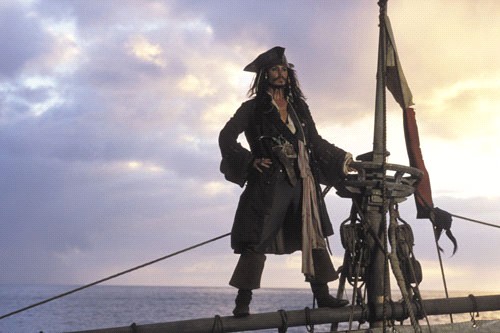 Boarding and pillaging are mainstays of the pirate business. In the movies, if not
in real life, we see the swashbuckling hero tie a rope around his feet, leap from
the rigging, and have the rope pull him up short just above the deck of the boat (or
the bubbling lava, the man-eating octopus, or whatever danger has been encountered)
allowing him to retrieve the treasure (or damsel, dog, or donut) and be pulled back
upward to safety.
Boarding and pillaging are mainstays of the pirate business. In the movies, if not
in real life, we see the swashbuckling hero tie a rope around his feet, leap from
the rigging, and have the rope pull him up short just above the deck of the boat (or
the bubbling lava, the man-eating octopus, or whatever danger has been encountered)
allowing him to retrieve the treasure (or damsel, dog, or donut) and be pulled back
upward to safety.
The goal of this competition is to drop a mass attached to an elastic cord. The mass must come close as possible to but without touching the landing surface. Successful teams will arrive at the competition with analysis of a large amount of performance evaluation test data for the elastic cord to allow accurate prediction for how to drop the given “pirate” mass toward the deck of the ship, getting as close as possible without actually hitting the deck.
Each team will provide one elastic cord with which they will conduct two separate drops. The first drop will be from a height announced by the judges with a pirate of one mass and the second drop from a second height with a pirate of a different mass. Each team will attempt to get each “pirate” as close as possible to, but without touching, a landing surface on the deck of the ship.
Devices will be impounded prior to the posting of both masses and both heights (which will be the same for all teams). After impoundment no physical alterations may be made to the device's elastic cord. Team members will only handle the cord to indicated the desired drop locations on the cord before each drop and to perform the actual drops.
The drop height values and drop instructions (to achieve all teams dropping from the same exact height) will be posted after impound. Both drop heights will be between 2-7 meters. The exact height from which the drop must occur will be verified by at least two separate measurements by the Judges. Teams may bring and use their own measuring device, but they must measure drop heights or masses during the time given for their two drops.
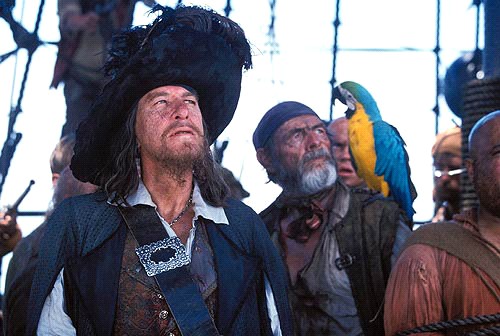 The mass of each “pirate” will be between 50-350 grams, in multiples of 10 grams.
The masses will consist of different amounts of ballast, which may be placed into
a 0.5-liter soda bottle or other suitable container The container's total mass value
and length, including the attachment mechanism, will be posted soon after impound.
The mass of each “pirate” will be between 50-350 grams, in multiples of 10 grams.
The masses will consist of different amounts of ballast, which may be placed into
a 0.5-liter soda bottle or other suitable container The container's total mass value
and length, including the attachment mechanism, will be posted soon after impound.
Students will provide one elastic cord to be used for both of their drops. The cord used may consist of more than one material (rubber, nylon, thread, plastic or metal springs, etc.) and more than one strand as long as it meets the elasticity test. Some examples of elastic cords are appropriately modified store-bought bungee cords, sewing elastic, latex tubing, or braided rubber bands. Every team's cord must terminate its bottom end with a closed metal ring (e.g., a key ring) with approximately ¾-inch diameter.
The elastic cord must be designed and built with no question as to the safety and quality. At any point before or during the competition, entries deemed by the judges to be unsafe will not be allowed to continue in the competition and will receive no further points.
The operational definition of elasticity for this event is: while being suspended vertically, the bottom meter of the cord must stretch to at least 1.25 meters when a single 500 gram mass is attached to this bottom section and return approximately to its original length after the mass is removed. Any team that fails this "elasticity test" will be allowed to compete, but will be ranked behind all teams which pass the test.
All contestants will ensure their entry works through the application of physics principles and generally follows the spirit of the competition. In particular, no team shall build a "self-limiting-brake" mechanism such as a separate, parallel, non-elastic strand which "brakes" the fall of the mass with little to no rebound. Any team that fails to follow the spirit of the rules, as deemed by the event coordinator, will not be allowed to compete and will receive no points.
Event supervisors will supply:
- the attachment mechanism (hook, carabineer. quick-link, etc.). that may include some sort of platform, and will connect the team's bottom cord ring to each mass.
- the top anchoring system for the cord, which all teams must use.
- an accurate system for determining how close a team's device came to the landing plane, and whether or not it touched.
The Drop: Teams will be given a total of 5 minutes to prepare their device in the holding area, followed immediately by 5 minutes to complete both drops.
The “pirate” will be released each time by one member of the team. That team member will be responsible for executing the drop so that the entire “pirate” falls within the designated target area. The target will consist of a center point and a concentric ring extending to a radius of 20-centmeters. The drop will not count toward the final score if the “pirate fails to completely clear the target ring.
A previously identified team member will be responsible for clearly announcing each drop just before it is made. No score will be recorded if the “pirate” is dropped prior to the judge’s acknowledgment of the team’s announcement of the impending launch.
Scoring: The team with the lowest total score for the two drops will be the winner. Teams with one drop that touches the landing plane will rank below those that have no touch. Teams with two touches will he ranked below those teams with one touch. Teams that failed the elasticity test will rank below all those that passed the elasticity test. If there is a tie the team with the single best drop overall (closest to the landing plane on either drop) will win.
Event 3: Raise the Treasure Chest
|
Event 4: Treasure Hunt
|
Event 5: Order-of-Magnitude Quiz (also known as Fermi Questions)
Arrive at a reasonable approximation for the value of a complex situation with very little to no information available to directly compute the answer. In this quiz, the contestants will need to quickly make assumptions for values to use in simple calculations in order to arrive at the "correct" answer, stated as the power of ten of the number that fits the accepted value.
Teams will receive 7 questions to complete within 15 minutes. The teams can divide the work in any way they see fit, but only one answer per question per team will be accepted.
Answers will be judged according to how many orders of magnitude the team's answer is from the judge's solution. The lowest score wins -- 0 points awarded for the answer accepted by the panel of judges, with 1 point scored per order of magnitude from the accepted value.
Examples of Order-of-Magnitude Quiz questions include:
- How many electrons enter the starter motor when a new, full-sized pickup starts?
- How many times would a tire of a Ford Taurus rotate when driven from NYC to LA?
- Estimate the number of gallons of gasoline used annually by all the cars in the USA.
A community of faculty, staff, and students engaged in better understanding the physical world.
Some of the links on this page may require additional software to view.



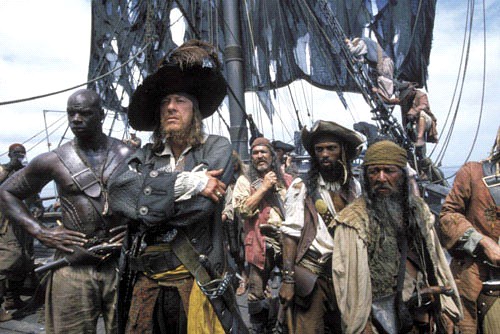 Students will use teamwork, communication and calculation skills to achieve the specified
goal. In this event, two members of each team will devise a plan to raise a heavy
treasure chest using the available levers and pulleys. Their written plan will be
delivered to the other two members of the team, who must follow the directions to
assemble the device and raise the treasure chest.
Students will use teamwork, communication and calculation skills to achieve the specified
goal. In this event, two members of each team will devise a plan to raise a heavy
treasure chest using the available levers and pulleys. Their written plan will be
delivered to the other two members of the team, who must follow the directions to
assemble the device and raise the treasure chest.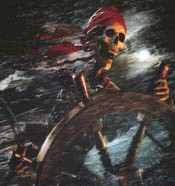 Activity is the key word for this competition, with the goal being for each team to
achieve the desired result as quickly as possible. The situation is designed to reward
teamwork and common sense thinking as well as knowledge of physics and the ability
to work with formulae. Every team will come away with smiles and good memories regardless
of how well they master the particular challenge.
Activity is the key word for this competition, with the goal being for each team to
achieve the desired result as quickly as possible. The situation is designed to reward
teamwork and common sense thinking as well as knowledge of physics and the ability
to work with formulae. Every team will come away with smiles and good memories regardless
of how well they master the particular challenge.